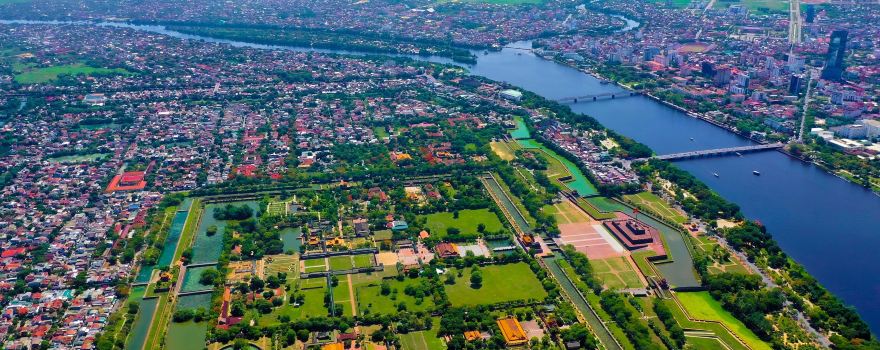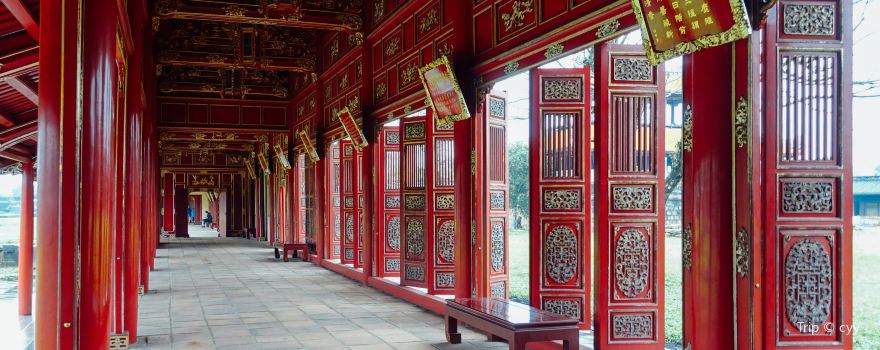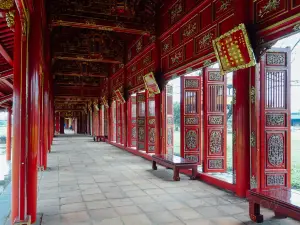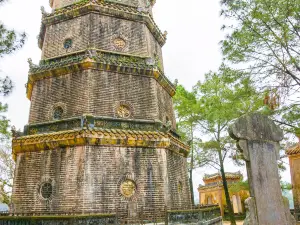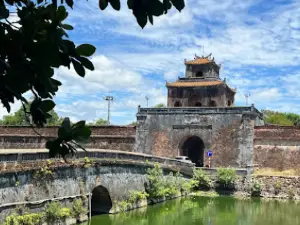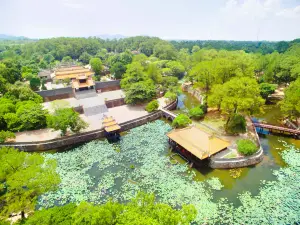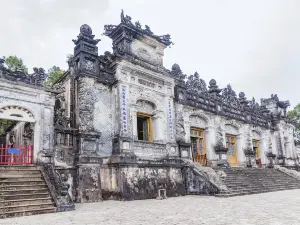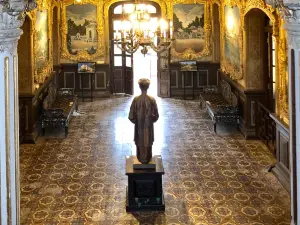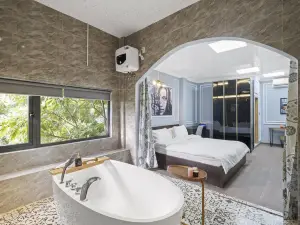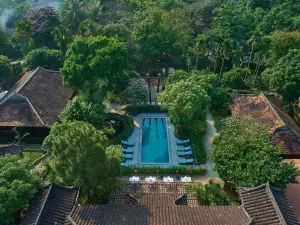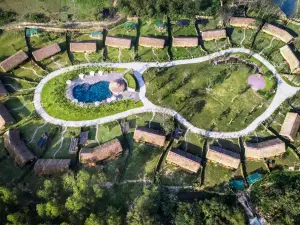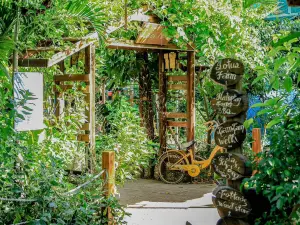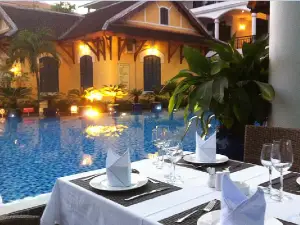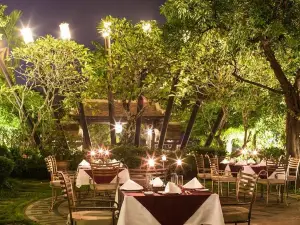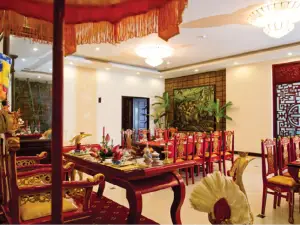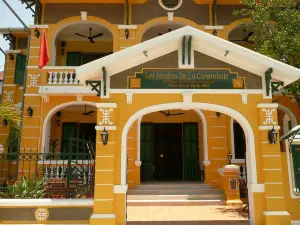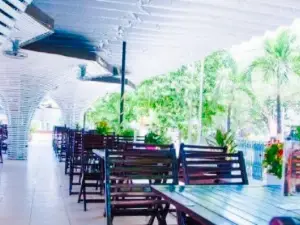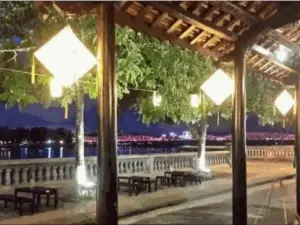Photos
Hue
2025 Hue Travel Guide: Weather, Transportation, Popular Attractions, and Everything You Need (Updated 2025 2)
About Hue
View Local Experiences on Map
Trip.Best: Hue
View More
Things to do in Hue
What to Do
Looking for things to do in Hue? We provide up-to-date info on everything from must-see scenic spots to local hangouts.
View More
Where to Stay
Discover the most popular places to stay in Hue, complete with recommendations from fellow travelers and special hotel offers
View More
What to Eat
Want to eat like a local? Don't miss out on these top Hue dishes and foodie spots.
View More
Cococlub Hue restaurant brasserie vietnamese & western
4.7/53 Reviews
Avg. KRW18,392/person
"Western-style"
Hue Moments: Through Travelers' Eyes
Post
#Recommended
#hue
#vietnam
#vietnamtrip

huewesternquarter
Great Vibes at Hue Walking street
isabella.linh
4

รับส่วนลดไม่พึ่งดวง
Imperial Citadel Hue
เที่ยวให้คนอิจฉา
1

vietnamtrip
Hue
Mo việt

vietnamtrip
Ancient Hue Garden House, Vietnam
Journey With Ricky
1

vietnamtrip
Pilgrimage Village Boutique Resort & Spa (Hue)
WandererBen
1

internationaltravel
Make your own incense sticks!
Gitana Marina
1

localguides
IMMERSE IN A COLORFUL NIGHT OF SỐNG LAB
Selie Dang

Hue Imperial City, a brilliant pearl of history
Joseph_Young
View More
What People Are Saying About Hue
Write a Review
Hue Historic Citadel
Anonymous User
Thien Mu Pagoda
johnswj90
Ba Na Hills
Enkh Ren
Đại Nội
Chubbie0310
Mausoleum of Emperor Tu Duc
icqpup
Tombs of the Nguyen Dynasty
Kumamon_daydayeat
Golden Hands Bridge
_TS***8i
An Dinh Palace
Elizadepaysement
Phu Cam Cathedral
Elizadepaysement
Best of Hue
Popular Types of Attractions in Hue
Cultural institutions | Museums | Specialty exhibition halls | Historical attractions | Nature and wildlife | Natural scenery | Beaches and shores | Mountain climbing | Leisure activities | Spa/massage | Farms and pastures | Camping · Campsites | Sightseeing tours | Boat tour | Night view | Parks | Amusement parks | Water parks | Outdoor activities | Cycling | Mountain climbing | Exhibitions & events
Popular Attractions in Hue
Popular Ranked Lists
Top 7 Best Things to Do in Phi Phi Islands | Popular Premium Hotels in Vinh City | Top 16 Local Restaurants in Seattle | Top 3 Best Things to Do in Heihe | Top 19 Local Restaurants in Istanbul | Top 7 Best Things to Do in Quito | Popular Luxury Hotels Near Georgioupolis | Top 3 Best Things to Do in Wuyishan | Popular Premium Hotels in Vigo | Top 5 Premium Hotels in Bath | Popular Local Restaurants in Suzhou | Top 11 Local Restaurants in Phu Quoc Island | Top 11 Local Restaurants in Okinawa | Top 3 Best Things to Do in Hainan Tibetan Autonomous Prefecture | Top 10 Luxury Hotels in Attica | Popular Best Things to Do in Menyuan | Popular Best Things to Do in Lincang | Popular Luxury Hotels Near Grasse | Popular Luxury Hotels in Paradise | Top 20 Local Restaurants in Chaozhou | Top 19 Local Restaurants in Nara | Popular Best Things to Do in Ningming | Top 4 Luxury Hotels in Leningrad Oblast | Popular Best Things to Do in Zhaoqing | Top 4 Premium Hotels in Windward Islands | Top 13 Best Things to Do in Tawau Division | Top 19 Local Restaurants in Athens | Top 20 Local Restaurants in London | Popular Premium Hotels in Gore Belediyesi | Popular Best Things to Do in Kaili
Popular Restaurants in Hue
Cococlub Hue restaurant brasserie vietnamese & western | Cherish Restaurant | RISOTTO Restaurant | Le Parfum | Nina's Cafe Restaurant | Elegant Restaurant | Mandarin Cafe | Serene Cuisine Restaurant | Les Jardins de La Carambole | DMZ Bar & Restaurant | Windows Cafe | Lien Hoa | Hoa Nghiem Vegetarian Restaurant | Jalapeno Restaurant | Bangkok restaurant | Ancient Town Restaurant | Golden Rice | ZUCCA Restaurant | Family Home Cafe & Restaurant | Red Chili | Nam Phuong Restaurant | Kyodai Japanese Restaurant | Blueberry Coffee | T' HOUSE COFFEE | Gecko Pub | Thang Long City Tour Restaurant | Why Not Bar & Restaurant | Cafe 12 | An Hien Bar & Cafe | La Pines
Trending Travelogues
Popular Destinations
Kampot Travel | Luang Prabang Travel | New Taipei City Travel | Phuket Travel | Phi Phi Islands Travel | Nanning Travel | Manila Travel | Taichung Travel | Nha Trang Travel | Koh Samet Travel | Munich Travel | Türkiye Travel | Lisbon Travel | Yanji Travel | Almirante Sur Travel | Ellesmere Port Travel | Haiphong Travel | Chaoyang District Travel | Baoshan District Travel | Burgpreppach Travel | Vivsya Travel | Champagne Travel | Kozliv Travel | Adams Travel | Mangli Travel | Guamacho Travel | Gokalthana Travel | Kabuli Travel | Beyr Oulad Issa Travel
Recommended Attractions at Popular Destinations
Bangkok attraction near me | Manila attraction near me | Tokyo attraction near me | Taipei attraction near me | Hong Kong attraction near me | Seoul attraction near me | Kuala Lumpur attraction near me | Los Angeles attraction near me | Shanghai attraction near me | New York attraction near me | Shenzhen attraction near me | Osaka attraction near me | Singapore attraction near me | London attraction near me | Guangzhou attraction near me | San Francisco attraction near me | Beijing attraction near me | Macau attraction near me | Bali attraction near me | Jakarta attraction near me | Paris attraction near me | Ho Chi Minh City attraction near me | Istanbul attraction near me | Phuket attraction near me | Chicago attraction near me | Seattle attraction near me | Toronto attraction near me | Orlando attraction near me | Cebu attraction near me | Chiang Mai attraction near me
Popular Trip Moments
Ancient Hue Garden House, Vietnam | IMMERSE IN A COLORFUL NIGHT OF SỐNG LAB | Share a travel plan for Hue, Vietnam, 2 days, 1 night. | Nook Eatery-Breakfast to Burgers เว้ เวียดนาม | Cafe coordinates, Hue, Vietnam Cà Phê Mo | Cafe coordinates Hue Vietnam HÚE Cafe | Coordinates of famous restaurant, Hue, Vietnam, Quan Hanh Restaurant | De-Po Cafe. | Azerai La Residence, Hue | Hue Imperial City, a brilliant pearl of history | Hue city - a must-visit in Vietnam | Hue Historic Citadel, Hue, Vietnam | Mausoleum of Emperor Tu Duc เที่ยวเว้ เวียดนาม | An incredible way to start the New Year👫🎉🇻🇳 | Celebrating New Year in Hue Imperial City 🎉👫🇻🇳 | Celebrating the New Year in Hue Imperial City🇻🇳👫🎉 | Flavorful Beginnings at Tịnh Quán | Imperial Citadel Hue | Entering the Imperial City of Hue, a World Heritage Site in Vietnam, it feels like falling into a time tunnel😊 | Best Hotel Ever | Co Hoa Incense Village, Hue | Vina Center Hotel | Mausoleum of Emperor Minh Mang: A Tranquil Masterpiece | [Vietnam, Hue Imperial Palace] | Hue city | Trip to Hue, Vietnam 🇻🇳 | Hue Imperial City | Must visit: Imperial City in Hue | Make your own incense sticks! | Ho Thuy Tien 🏙️
Popular Travel Types
More Things To Do in Hue
【Vietnam eSIM】Vinaphone 4G local data eSIM|No speed reduction for high-speed traffic | From Da Nang city or Hoi An: Hue Imperial City full-day tour | one-day tour to Bana Hills in Da Nang, Vietnam | [Vietnam SIM Card] Vinaphone 4G/LTE data + Optional Calls SIM (pick up at Ho Chi Minh/Hanoi/Nha Trang Airport) | one-day tour to Hue Imperial City in Hue, Thua Thien Hue Province, Vietnam | [Vietnam Tourist Visa] Fast and Easy Vietnam Visa On Arrival Service | General and EMERGENCY | Vietnam tourist/business e-Visa Global acceptance | Hue Imperial City Full - Day Tour from Da Nang City or Hoi An | Cu Chi Tunnels and Mekong Day Tour Small Group | Da Nang Private Car Rental With Driver - Da Nang, Hoi An, Hue | Phong Nha/Dong Hoi: Phong Nha Cave & Paradise Cave Day Tour | Hue double-decker sightseeing bus City Sightseeing Hue | Private car from Da Nang to Hue, InterContinental, Hoi An, Ba Na Hills, Vinwonder and vice versa | Private car from Hoi An to Hue, InterContinental, Da Nang, Ba Na Hills, Vinwonder and vice versa | Private car charter from Da Nang city | Hue Imperial City Full Day Small Group Tour from Da Nang | JEEP TOUR: From HOI AN, DA NANG To HUE via HAIVAN PASS | TIEN SA or CHAN MAY Port to GOLDEN BRIDGE - Marble Mountains | Dmz tour with Vinh Moc and Khe Sanh Combat base | Private car rental in Quang Binh with driver | Hue City Tour 1 Day with Dragon Boat from Hue, Danang, Hoi An | Scenic trip from Hue to Hoi An via Hai Van pass by car | FROM HUE'S IMPERIAL HISTORY TO PHONG NHA'S CAVE KINGDOM | Hue Authentic Street Food tour | From Hue: Paradise Cave and Dark Cave Day Tour | 3-Hours Hue Imperial Walking Tour with Guide | Hue-Golden Bridge-Hoi An/ Da Nang car Transfer or Vice Versa | Vietnam DMZ Day Trip from Hue | Best Seller of Bach Ma National Park Full-Day Trekking Tour From Hue | Hue to Hoi An with Sightseeing via Hai Van Pass
Payment Methods
Our Partners
Copyright © 2025 Trip.com Travel Singapore Pte. Ltd. All rights reserved
Site Operator: Trip.com Travel Singapore Pte. Ltd.
Site Operator: Trip.com Travel Singapore Pte. Ltd.

